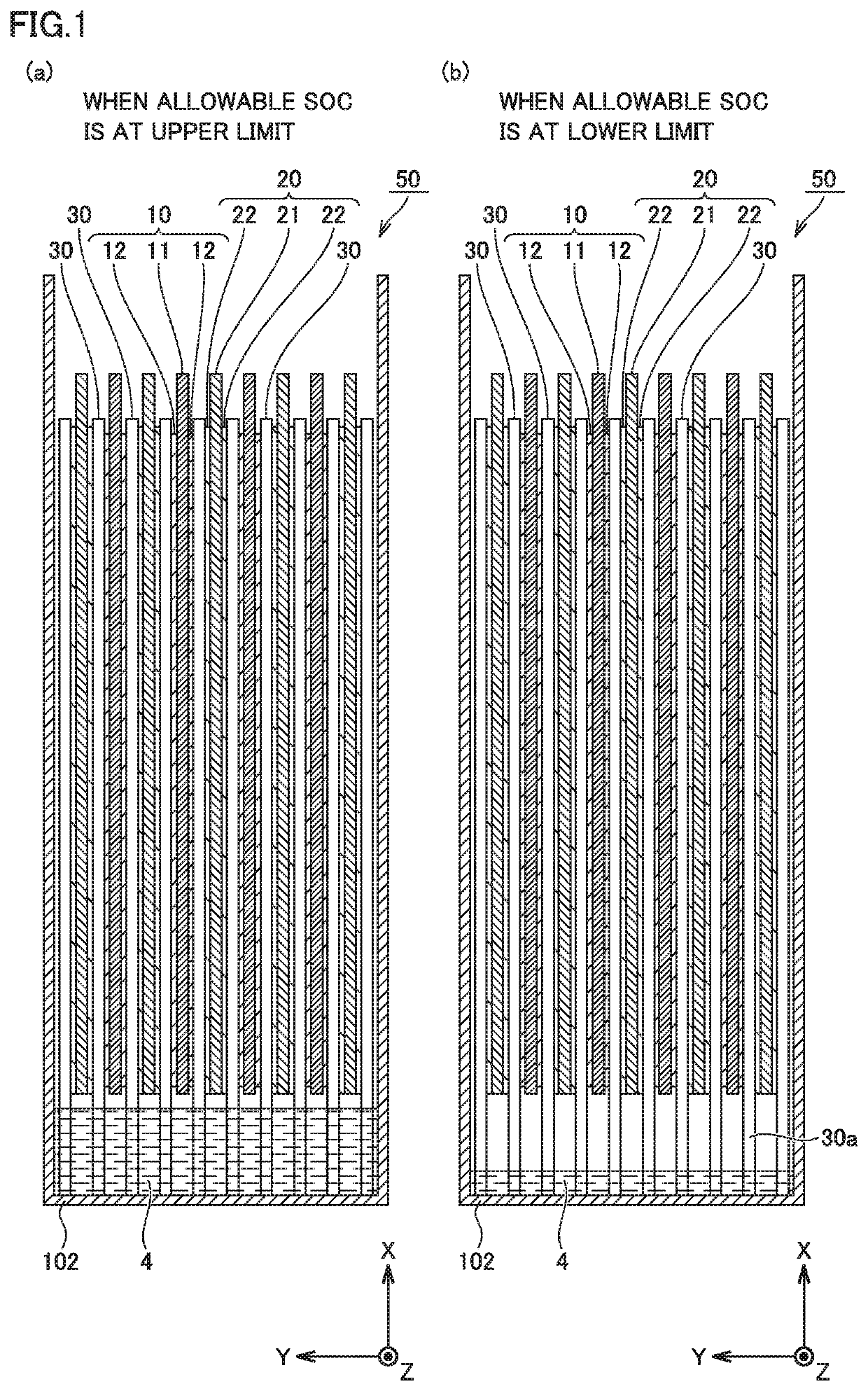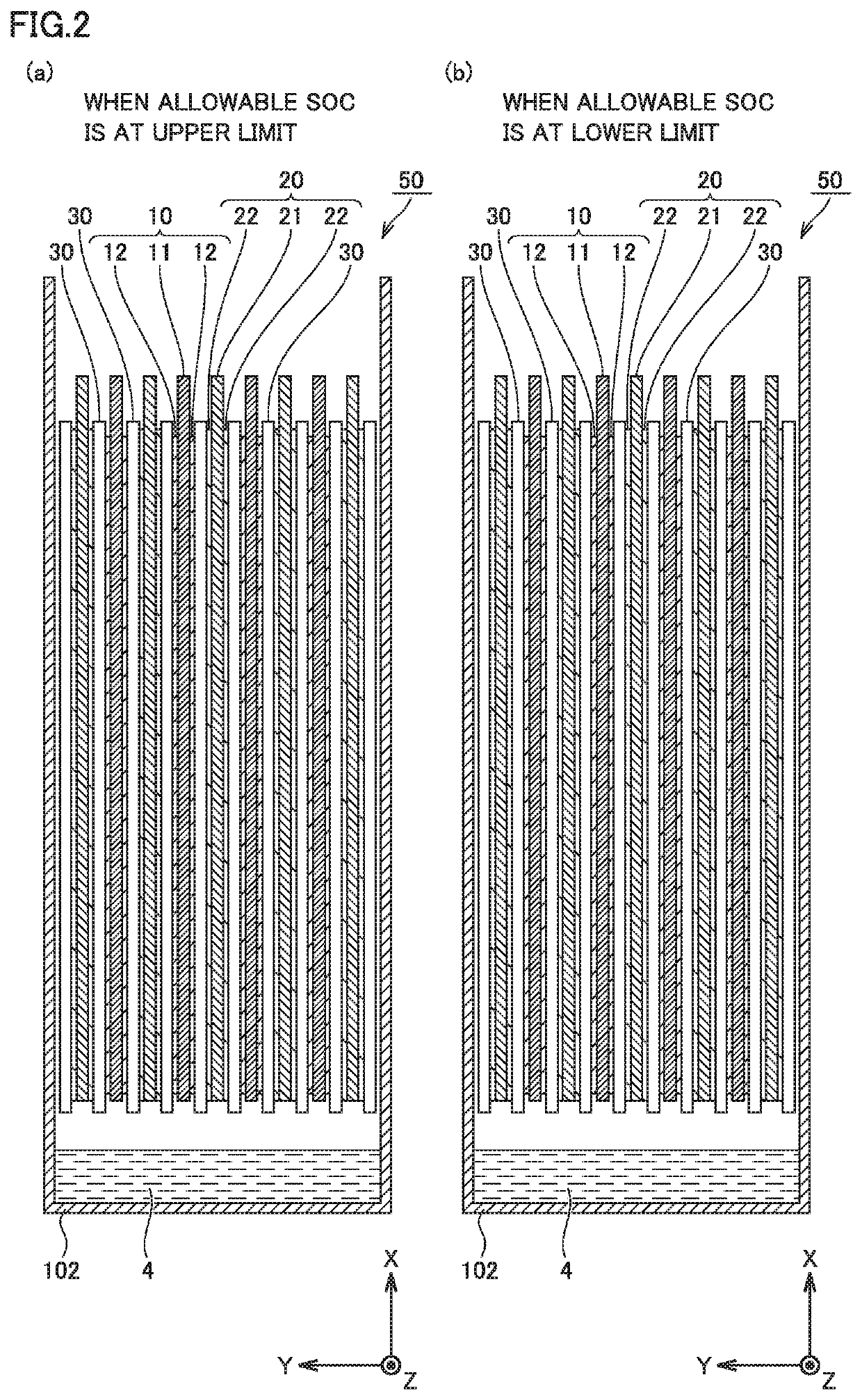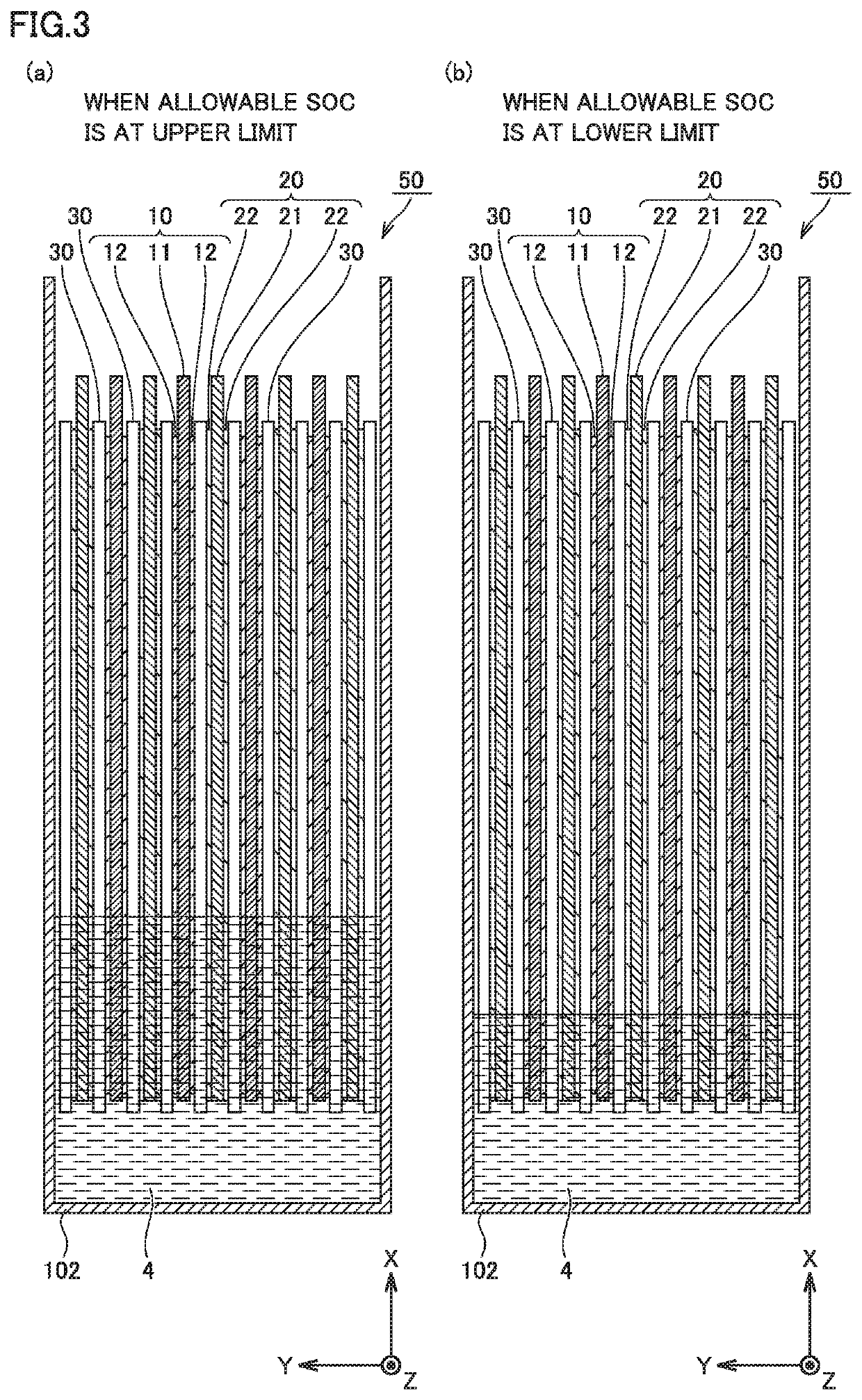Non-aqueous electrolyte secondary battery
a non-aqueous electrolyte, secondary battery technology, applied in secondary cells, battery servicing/maintenance, sustainable manufacturing/processing, etc., can solve the disadvantage of lowering the high-rate performance of the non-aqueous electrolyte secondary battery, lowering the resistance against precipitation of li, and suppressing the variation of the resistance of the electrode
- Summary
- Abstract
- Description
- Claims
- Application Information
AI Technical Summary
Benefits of technology
Problems solved by technology
Method used
Image
Examples
example 1
[0057]>
[0058]Materials below were prepared.
[0059]Positive electrode active material: LiNi0.5Co0.2Mn0.3O2 (NCM523)
[0060]Conductive material: AB
[0061]Binder: PVDF
[0062]Solvent: N-methylpyrrolidone (NMP)
[0063]Positive electrode current collector: aluminum foil (having a thickness of 15 μm)
[0064]Ninety-six parts by mass of positive electrode active material, 2 parts by mass of conductive material, and 2 parts by mass of binder were mixed in a solvent. A positive electrode composite material paste was thus prepared. A positive electrode composite material layer was formed by applying the positive electrode composite material paste to both surfaces of a positive electrode current collector with a die coater and drying the paste. A positive electrode in which the positive electrode composite material layer was stacked on both of the surfaces of the positive electrode current collector was thus manufactured. The positive electrode was further compressed and punched into a prescribed shape. ...
PUM
| Property | Measurement | Unit |
|---|---|---|
| thickness | aaaaa | aaaaa |
| thickness | aaaaa | aaaaa |
| thickness | aaaaa | aaaaa |
Abstract
Description
Claims
Application Information
 Login to View More
Login to View More - R&D
- Intellectual Property
- Life Sciences
- Materials
- Tech Scout
- Unparalleled Data Quality
- Higher Quality Content
- 60% Fewer Hallucinations
Browse by: Latest US Patents, China's latest patents, Technical Efficacy Thesaurus, Application Domain, Technology Topic, Popular Technical Reports.
© 2025 PatSnap. All rights reserved.Legal|Privacy policy|Modern Slavery Act Transparency Statement|Sitemap|About US| Contact US: help@patsnap.com



